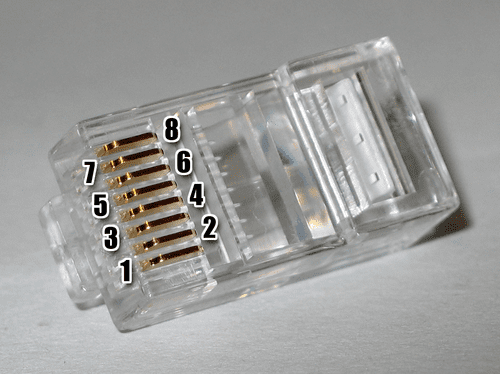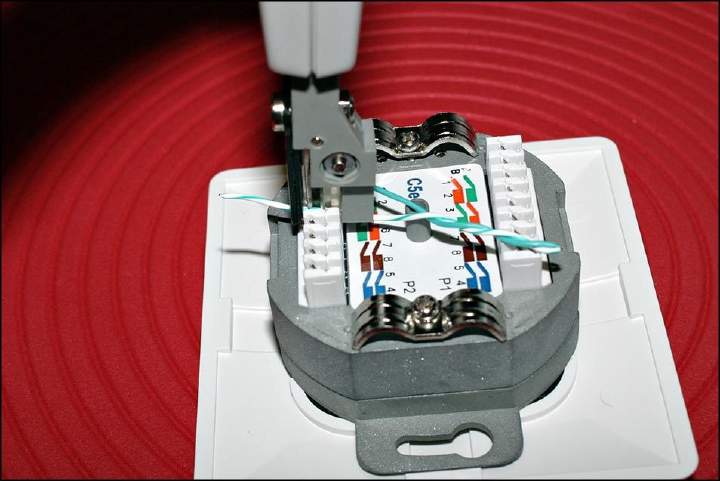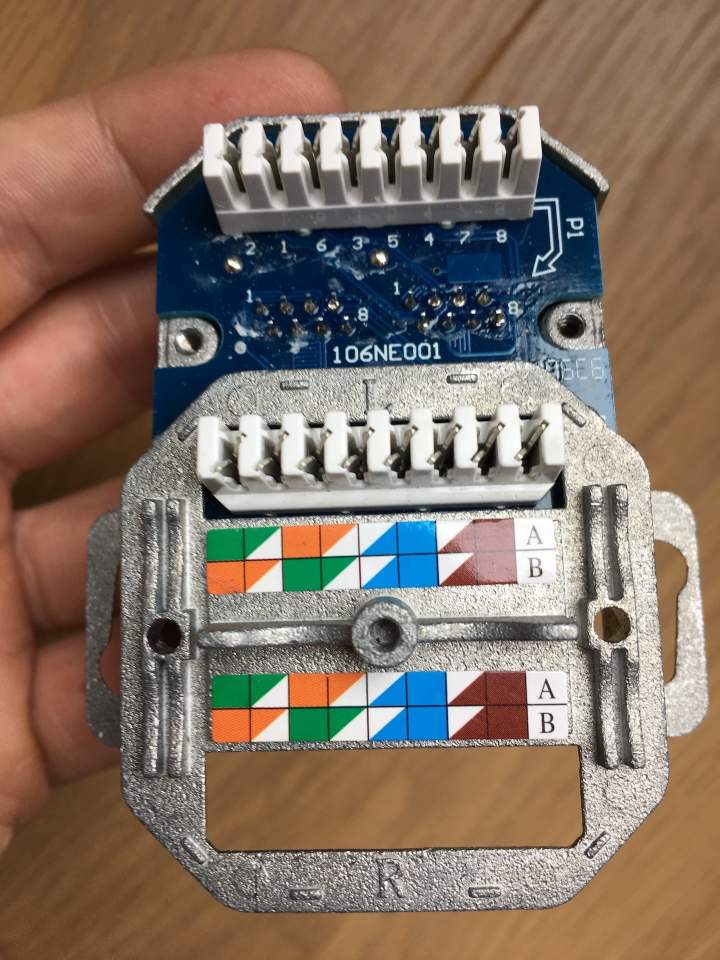Crimping network cables
(Updated: )
Although most of us (including me) are familiar with making our own network cables/jacks, I recently wired network cable in my house learned some new things/abbreviations on cable thickness, cable material, pin termination, cross-over vs straight cables. I document my findings here for reference and case I forget in the future ;).
Glossary ¶
- UTP (wikipedia.org) (‘Unshielded Twisted Pair’) - A type of cable where the pairs of wires are twisted to improve signal quality, there are different shielding flavours available: U/UTP F/UTP U/FTP F/FTP (wikipedia.org)
- CAT (wikipedia.org) (‘Category’) a type of twisted pair cable specifically for Ethernet
- AWG (‘American wire gauge’) (wikipedia.org) - a certification for cable thickness, lower is thicker.
- RJ (‘Registered jack’) (wikipedia.org) - a type of jack/connector, RJ45 (wikipedia.org) is commonly used for for ethernet as it has 8 pins
- Punch down tool (wikipedia.org) (also known as LSA punch down) - a tool to punch wires in to IDC.
- T568A/B (wikipedia.org) - a type of wiring/termination schema for telecommunication
- IDC (‘Insulation-displacement connector’) (wikipedia.org) - a connector where the insulation of the wire is removed upon installation
Hardware ¶
Cable ¶

Get a UTP cable (wikipedia.org) cable. Things to watch out for:
- CATx: CAT6 (wikipedia.org) for Gigabit, or more if you’re ambitious
- AWG: Ideally around AWG 23 (wikipedia.org)
- Solid copper wires or stranded in case of need for flexibility (thanks sebastius)
- Shielding (wikipedia.org) is nice but only needed in high noise environments (maybe next to electricity wires).
- Material: watch out for cheap cables which have copper-clad aluminium. To test, put the wire in a flame, aluminium will melt/burn, copper will stay intact (although this test methods means you need to have the cable
 )
)
Connectors ¶

Get RJ45 (wikipedia.org) jacks
- ensure they match your cable thickness.
- ensure they’re matched to solid/stranded cables (l-com.com) (thanks GoT!)
Installation ¶
Pull the cable where you need it, when pulling them through tubes, lubricate with Vaseline or similar if you have difficulty. However note that vaseline might dry out and make the next pull more difficult (thanks RobIII).

Terminate the cables, either in a wall socket, or with a RJ45 plug (wikipedia.org). When terminating, be sure to:
- ensure you terminate each cable to the same pin on both ends (’straight’), cross-over cables (wikipedia.org) are not necessary since 1998 when Auto MDI-X was introduced.
- When connecting the cable to the wall socket, a punch down tool might help in case of IDCs.
- When connecting the cable to a plug, ensure you have a crimping tool.
- It matters how your terminate the wires on each end (thanks vanaalten), T568B (wikipedia.org) (thanks Wildfire) is used by default so stick to this.
